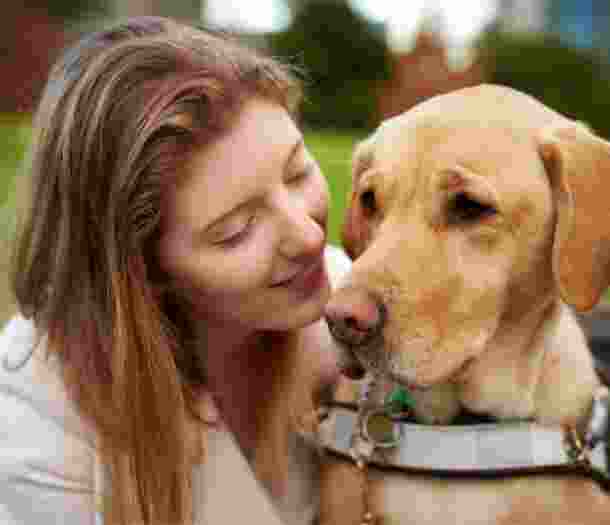On this page:
What is involved in a Guide Dog partnership?
We strive to ensure you and your dog share a powerful bond.
It is absolutely essential that you and your dog share a powerful bond, built on trust, companionship and a strong connection.
There are several steps involved in preparing dogs for these relationships, using behavioural science and modern force-free training techniques. They include assessment, training and partnership.
Every Guide Dog goes through an intensive training program to learn the skills required to navigate communities – from busy city streets, to the uneven paths and tracks of rural environments.
After training, dogs are matched with partners through a detailed selection process that caters for your individual personality, mobility needs, and lifestyle.
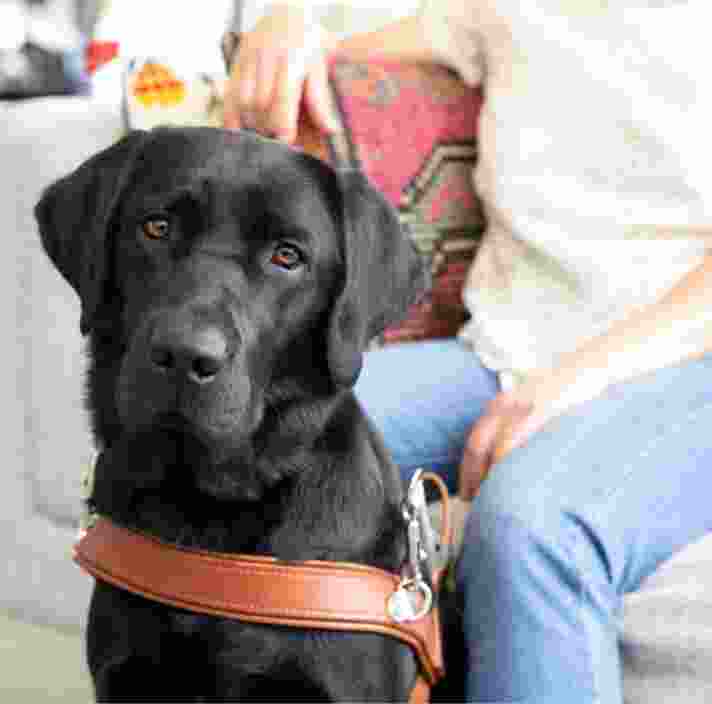
About the puppy assessment process
To graduate, every Guide Dog puppy must meet the highest standards.
After ten months in the Puppy Raising program – at around one year of age – young dogs return to the Training Centre for a thorough assessment of their physique and personality. Our veterinarian gives every puppy a health examination on arrival, using kind and welfare-friendly techniques.
The dogs complete a two-week temperamental assessment. Instructors will note the dogs’ reactions to different situations that are common in day-to-day environments. For example, their reaction to other dogs and cats. Other tested distractions include food, noise, or other circumstances that the future guide will be required to work in daily.
Selection criteria are extremely strict. Every puppy has to meet the highest standards as the safety of their future mobility partner is paramount.
We don’t receive any government funding for our Guide Dog training program, so generous and regular support from the community is essential in helping our puppies change lives. Every contribution counts.
As a result of the rigorous process, less than 50% of pups are accepted into the Guide Dog program.
Puppies that do not meet the selection criteria for Guide Dog work may go on to become Pets As Therapy (PAT) dogs or Companion Dogs. They can also return home to the Puppy Raiser as a pet or be adopted by someone from the general community.
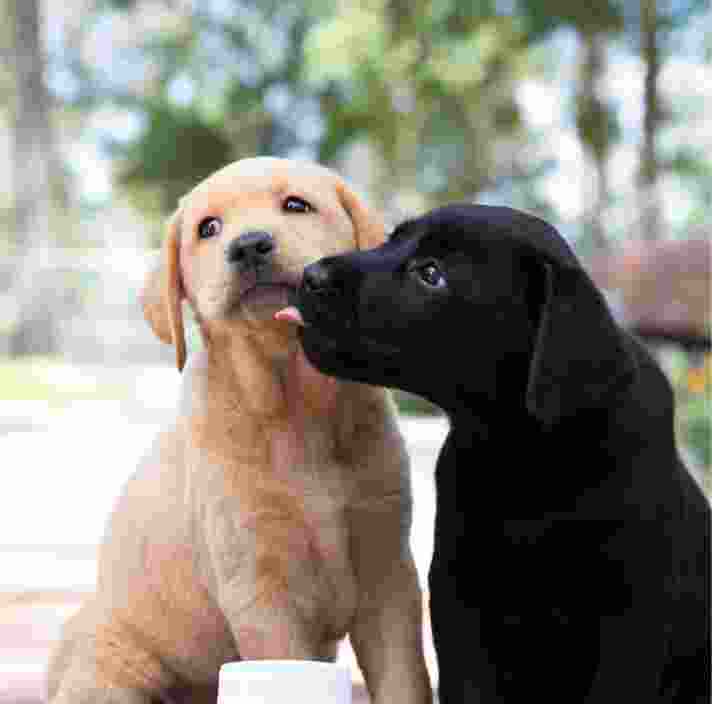
The first stages of Guide Dog training
It takes hard work, skill, and dedication to meet the world-class standards of a fully-qualified Guide Dog.
Guide Dog training involves an intensive five-month program. Each Guide Dog instructor will work with a group of six to eight dogs. Over the course of more than 80 training sessions, the instructors gain a detailed understanding of each dog’s physical abilities, personality traits and temperament.
Training environments include suburban residential environments, semi-business and city scenarios, and rural conditions. A fully trained Guide Dog will have experience in guiding a person with low vision in whatever environment their home is likely to be.
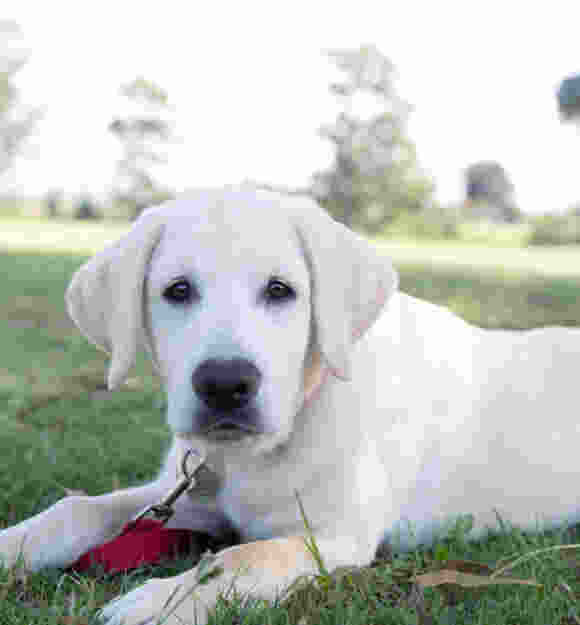
- Walking in a straight line
- Ignoring distractions like cats, food or other dogs
- Indicating a curb by stopping
- Understanding the meaning of simple verbal commands, including ‘stop’, ‘forward’ and ‘straight to the curb’
- Targeting destinations that a mobility partner will go to, e.g. the workplace, doctors or kids school.
Moving into advanced training
As training continues, the skills become more advanced.
During the second month of the training program, the instructors begin teaching dogs more advanced safety techniques. For example, going around obstacles such as overhanging trees at head height, navigating through busy crowds, and locating and travelling on public transport
The Guide Dog receives primary and secondary reinforcement for making good choices. Trainee Guide Dogs also relax in the hydro pool, receive regular massages, and engage in play sessions for relaxation.
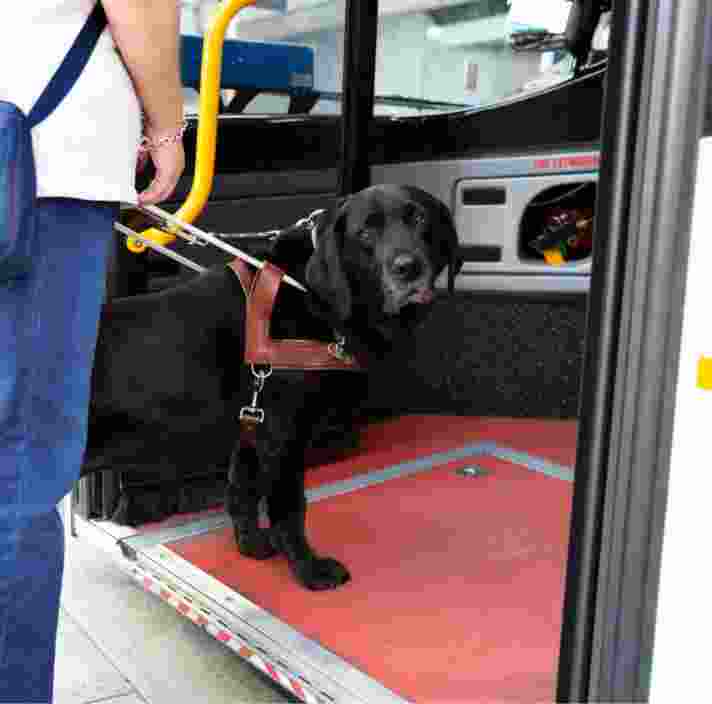
The final stages of training
Throughout the final stages of the training program, Guide Dogs begin to learn traffic safety skills.
Instructors work with dogs on a number of advanced routes where guiding ability can be assessed.
For example, dogs will be evaluated as they walk to a train station, board a train to the city, travel up to street level from the underground, and find their way to a practical destination such as Melbourne Central. Dogs will be assessed as they navigate through busy and distracting crowds, and return to their original starting point via another transport system, like a bus.
The goal is to simulate the reality of the guiding work the dog will do when matched with their person with low vision.
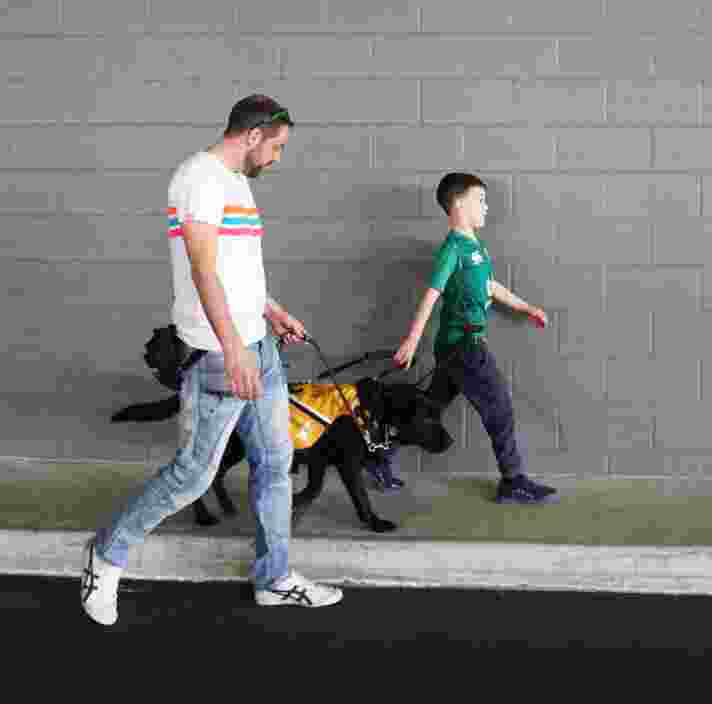
Ready for graduation!
Preparing to enter a life-changing partnership.
After around 20 weeks, the dog has learned to respond confidently to around thirty commands by word, hand or foot. They will have also learned to disregard these commands in certain situations for the safety of their mobility partner.
The graduate Guide Dog is now ready to be matched with a person with low vision. Once matched with a person, fully graduated Guide Dogs offer companionship, safety and friendship.
When a Guide Dog retires, they usually stay with their family and friends as a regular pet dog. Many put their paws up to enjoy retirement, although sometimes they can play a valuable role in helping a new Guide Dog settle in.
Matching Guide Dogs with their new partners
Guide Dogs are matched with people based on the person's personality, mobility needs, and lifestyle.
Once you are accepted for Guide Dog training, we seek your closest match with a Guide Dog nearing the final stages of training.
The average waiting time for a Guide Dog is four to six months. Some people may be prepared to wait longer to ensure you receive the right dog for your specific needs.
Careers
Join the Guide Dogs team
Learn more about working with our dogs.
Ready to continue?
Seems like you have filled this form earlier. Let’s pick up where you left off.
